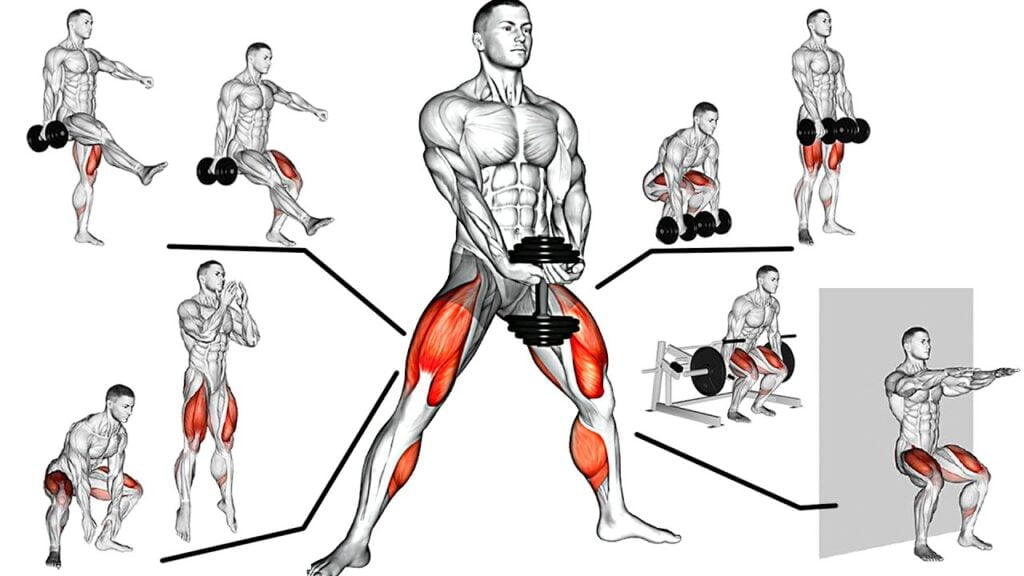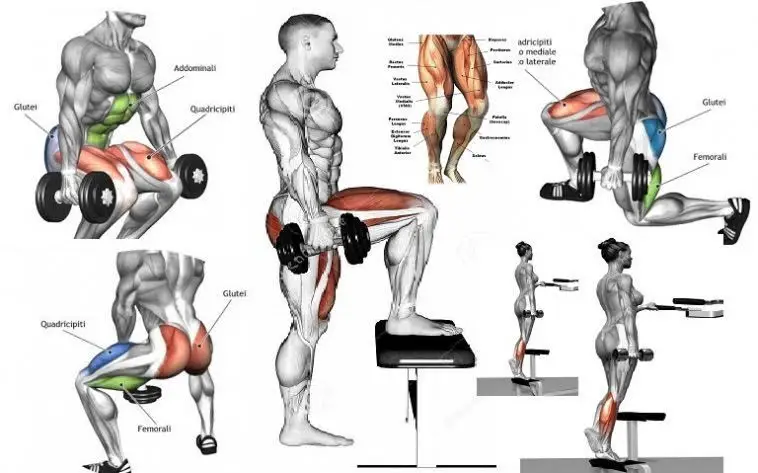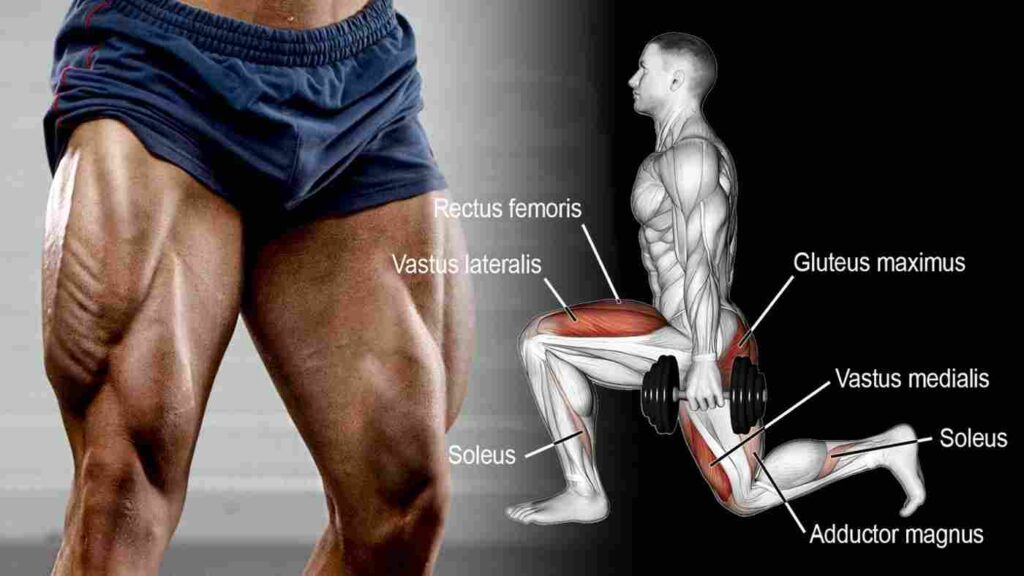Introduction
Welcome to a comprehensive guide dedicated to one of the most crucial aspects of effective leg press workouts – foot placement. The leg press machine is a staple in lower body training, but did you know that where you position your feet can significantly influence your results? In this article, we delve into the intricate art of leg press machine foot placement.
SHOP FOR THE ADJUSTABLE DUMBBELL SET ON AMAZON
We’ll explore its immense importance, its impact on engaging specific muscles, and how it stacks up against other lower-body exercises. By the end, you’ll be armed with the knowledge needed to position your feet optimally, maximizing your gains from every leg press session.
Understanding Leg Press Machine Foot Placement

Proper Leg press machine foot placement is a fundamental aspect of optimizing your lower body workout. The position of your feet determines which muscles are targeted, the level of muscle engagement, and the overall effectiveness of your training.
Importance of Correct Foot Placement
Correct foot placement on the leg press machine is essential for several reasons:
- Proper alignment of the spine and other body parts: When your feet are properly aligned, it helps to keep your spine and other body parts in alignment as well. This can help to prevent pain and discomfort in the back, neck, hips, and knees.
- Reduced stress on the joints: When your feet are properly aligned, it helps to reduce the stress on the joints in your feet, ankles, and legs. This can help to prevent injuries such as plantar fasciitis, shin splints, and stress fractures.
- Improved balance and coordination: When your feet are properly aligned, it helps to improve your balance and coordination. This can help you to avoid falls and other accidents.
- Increased efficiency of movement: When your feet are properly aligned, it helps you to move more efficiently. This can help you to save energy and improve your performance in activities such as walking, running, and sports.
The correct foot placement varies depending on the activity you are doing. For example, the correct foot placement for walking is different from the correct foot placement for running. However, there are some general principles that apply to all activities.
Different Foot Placement for Leg Press
There are 7 different foot placements for leg press, each of which targets different muscle groups in the legs.
- Standard stance: This is the most common foot position, with the feet placed shoulder-width apart and pointing straight ahead. This position works for all the major muscle groups in the legs, including the quads, hamstrings, and glutes.
- Wide stance: This position places the feet wider than shoulder-width apart, with the toes pointed slightly outward. This position targets the glutes and hamstrings more than the quads.
- Narrow stance: This position places the feet closer together than shoulder-width apart, with the toes pointed straight ahead. This position targets the quads more than the glutes and hamstrings.
- High foot placement: This position places the feet higher up on the footplate, closer to the chest. This position targets the glutes and hamstrings more than the quads.
- Low foot placement: This position places the feet lower down on the footplate, closer to the knees. This position targets the quads more than the glutes and hamstrings.
- Single leg press: This position is done with one leg at a time, with the other leg resting on the footrest. This position allows you to isolate each leg and target it more effectively.
- Toes only: This position is done by pressing with your toes only. This position targets the calves more than the other muscle groups in the legs.
The best foot position for you will depend on your individual goals and strengths. If you are looking to build overall leg strength, the standard stance is a good option. If you are looking to target your glutes and hamstrings more, a wide stance or high foot placement is a better choice. If you are looking to target your quads more, a narrow stance or low foot placement is a better choice.
SHOP FOR THE RESISTANCE BAND ON AMAZON
It is important to experiment with different foot positions to find what works best for you. You may also want to consult with a personal trainer or strength coach to get personalized guidance.
Here are some additional tips for using the leg press safely and effectively:
- Keep your back flat against the backrest.
- Do not lock your knees at the top of the movement.
- Control the weight on the way down.
- Do not overextend your range of motion.
- Listen to your body and stop if you feel any pain.
The leg press is a great exercise for building strength and muscle in the legs. By using different foot positions, you can target different muscle groups and get the most out of your workout.
Muscles Targeted by the Leg Press Machine
The leg press machine is a popular exercise machine that targets the major muscles in the lower body. The primary muscles worked by the leg press are:
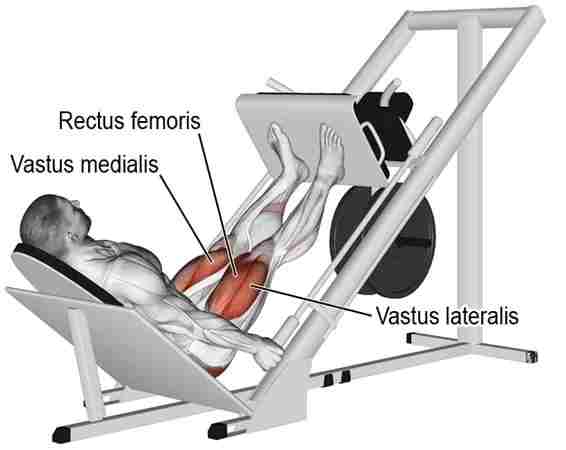
- Quadriceps (Front Thigh Muscles): The leg press is renowned for its ability to effectively target the quadriceps. As you push the platform away, your quads work to extend your knees. The different foot placements on the platform can shift the emphasis within the quad muscles, allowing you to target specific areas.
- Hamstrings (Back of Thigh Muscles): While the quads play a prominent role, the hamstrings also get involved during the leg press. They act as stabilizers, helping to control the descent of the weight and contribute to knee flexion when you bend your knees during the movement.
- Glutes (Buttocks Muscles): Your glutes are engaged as you press the weight away. To increase glute activation, placing your feet higher on the platform and adopting a wider stance can emphasize the glutes’ involvement in the movement.
- Calves (Calf Muscles): Although not the primary muscle group targeted, the calf muscles assist in the leg press movement, particularly during the pushing phase. They play a role in helping you extend your ankles as you push the platform away.
- Adductors: The adductors are the muscles on the inside of the thigh. They are responsible for adducting the thigh (bringing it towards the midline of the body).
The leg press machine is a powerhouse for lower body training, engaging a variety of muscle groups. Proper foot placement and technique are crucial not only for the effective targeting of these muscles but also for minimizing the risk of injury.
Leg Press vs Squat: Which is Better?
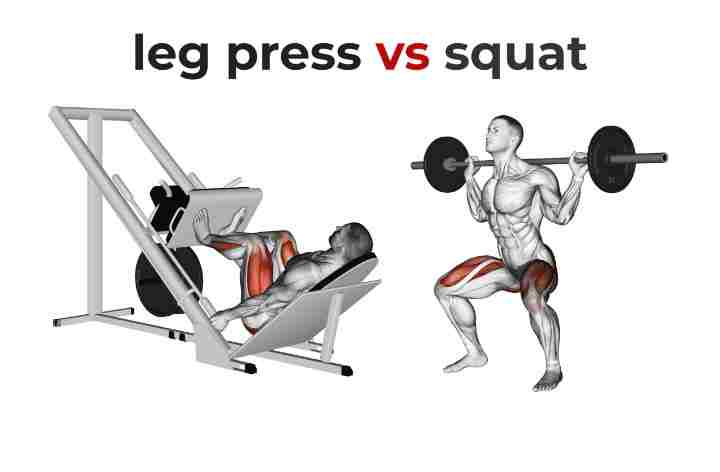
The leg press and the squat are both effective exercises for working your lower body muscles, but they have different advantages and disadvantages.
The squat is a compound exercise that works your quads, hamstrings, glutes, and core. It is a more challenging exercise than the leg press, and it requires more balance and stability. The squat also has a greater range of motion, which can help to improve flexibility and range of motion in your hips and knees.
The leg press is an isolation exercise that primarily works your quads. It is a less challenging exercise than the squat, and it does not require as much balance or stability. The leg press also has a shorter range of motion, which can make it less effective for improving flexibility and range of motion.
Which exercise is better for you?
The best exercise for you depends on your individual goals and fitness level. If you are looking for a challenging exercise that will work your entire lower body, then the squat is a good choice. If you are looking for a less challenging exercise that is easier on your joints, then the leg press is a good option.
If you are new to exercise, it is a good idea to start with the leg press and gradually work your way up to the squat. You can also do both exercises in your workouts.
Foot Placement Variations for Targeted Results
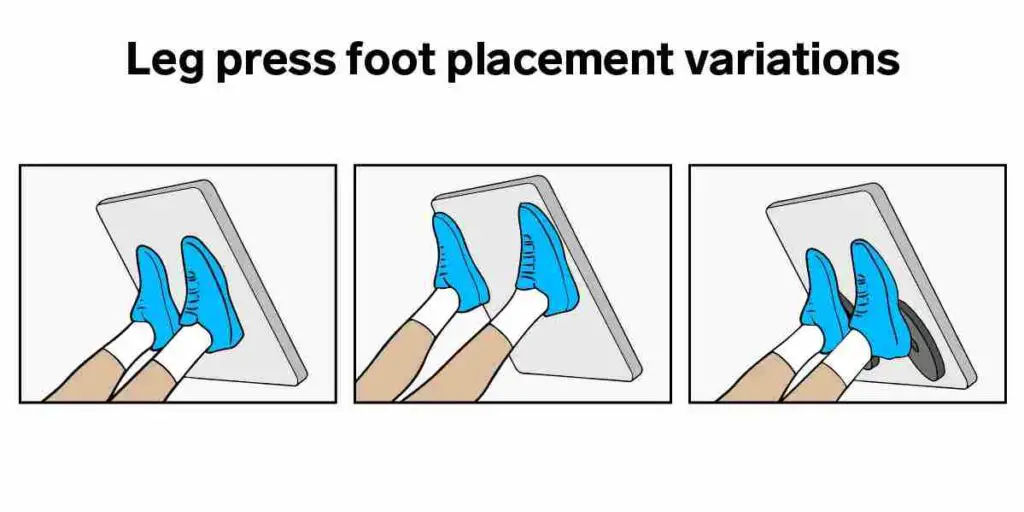
The leg press machine isn’t just a one-size-fits-all piece of equipment. By adjusting your foot placement, you can target specific muscle groups and emphasize different areas of your lower body. Let’s explore various foot placement variations that can help you achieve your desired results:
Glute Emphasis
If your goal is to sculpt your glutes, positioning your feet higher on the platform is key. This foot placement engages your glute muscles to a greater extent. Here’s how to do it:
- Sit down on the leg press machine and place your feet about shoulder-width apart.
- Position your feet higher on the platform, ensuring that your heels are on the edge and your toes are pointing slightly outward.
- As you push the weight away, focus on using your glutes to drive the movement.
- Feel the contraction in your glute muscles throughout the exercise.
Tip: Squeeze your glutes at the top of the movement for an extra burn.
Quad Focus
To target your quadriceps—the muscles on the front of your thighs—opt for a lower foot placement. This variation increases the engagement of your quads throughout the exercise:
- Sit comfortably on the leg press machine with your feet positioned hip-width apart.
- Place your feet lower on the platform, ensuring that the balls of your feet are pressing against it.
- As you push the platform away, concentrate on using your quads to extend your knees. You should feel a deep burn in your quadriceps.
Tip: Keep your back firmly against the seat and avoid locking out your knees to maintain tension on your quads.
Total Leg Engagement
If your aim is to work both your quads and hamstrings simultaneously, a mid-range foot placement is ideal. This balanced approach provides a comprehensive lower-body workout:
- Sit down and position your feet in the middle of the platform, about shoulder-width apart.
- Your feet should be centered on the platform, allowing for equal distribution of effort between your quads and hamstrings.
- As you press the weight away, you’ll feel the muscles in your entire leg working together.
Tip: Focus on maintaining proper form throughout the movement to ensure that both muscle groups are effectively targeted.
SHOP FOR THE BARBELL WEIGHT PLATES ON AMAZON
Remember, everyone’s body is different, and what works best for one person may not be optimal for another. Don’t be afraid to experiment with different foot placements and observe how your body responds. It’s also crucial to use an appropriate amount of weight that challenges you without sacrificing proper form.
Common Mistakes to Avoid When It Comes to Leg Press Machine Foot Placement
Achieving optimal results on the leg press machine isn’t just about loading up weights and pushing. Proper foot placement plays a crucial role in targeting specific muscle groups, preventing injuries, and ensuring an effective workout. To ensure you’re making the most of your leg press sessions, here are some common mistakes to avoid:
- Placing Feet Too High or Too Low: One of the most prevalent mistakes is placing your feet either too high or too low on the footplate. Placing your feet too high can lead to excessive stress on your lower back, while placing them too low might strain your knees. Aim for a position where your knees are comfortably aligned with your hips when they’re bent at a 90-degree angle.
- Neglecting Alignment: Knees and Toes: Misalignment of your knees and toes can lead to discomfort and injury. Your toes should be pointing slightly outward, following the natural angle of your hips. Make sure your knees are tracking in the same direction as your toes throughout the movement to prevent any undue stress on your joints.
- Ignoring Individual Biomechanics: Everyone’s body is unique, and this includes differences in joint structure and flexibility. Don’t assume that a particular foot placement that works for someone else will work for you. Experiment with different positions and angles to find what feels most comfortable and effective for your body.
- Using Too Much Weight: It’s tempting to load up the leg press machine with heavy weights, but using too much weight can lead to poor form and an increased risk of injury. Start with a weight that allows you to perform the exercise with proper technique and a full range of motion. Gradually increase the weight as you become more comfortable.
- Failing to Adjust Foot Placement for Different Sets and Reps: Different goals require different approaches. For instance, if you’re aiming for glute activation, placing your feet higher on the footplate can help target those muscles. Adjust your foot placement based on whether you’re focusing on strength, hypertrophy, or endurance.
- Not Considering Hip and Knee Alignment: Hip and knee alignment is crucial for maintaining proper form and preventing injuries. Your knees should be in line with your toes, and your hips should remain stable throughout the movement. Avoid allowing your knees to cave inward or outward during the press.
SHOP FOR THE FOAM ROLLER ON AMAZON
By avoiding these common mistakes and paying close attention to your foot placement, you’ll be well on your way to reaping the maximum benefits from your leg press machine workouts. Remember, quality trumps quantity, and precision in foot placement can lead to exceptional gains while minimizing the risk of injury.
Alternatives to the Leg Press
Here are some alternatives to the leg press:
- Squats: Squats are a compound exercise that works all the major muscles in the lower body, including the quads, hamstrings, glutes, and calves. They are a more challenging exercise than the leg press, but they are also more effective for building strength and muscle mass.
- Lunges: Lunges are another compound exercise that works the lower body. They can be done with dumbbells or a barbell. Lunges are a unilateral exercise, which means that each leg works independently. This can help to improve balance and coordination.
- Leg extensions: Leg extensions target the quads. They can be done with a machine or with dumbbells.
- Hamstring curls: Hamstring curls target the hamstrings. They can be done with a machine or with dumbbells.
- Leg press using resistance bands: Resistance bands can be used to replicate the movement of the leg press. This is a good option if you do not have access to a leg press machine.
- Step-ups: Step-ups are a plyometric exercise that works the quads, glutes, and calves. They can be done with a bench or a staircase.
- Belt squats: Belt squats are a variation of the squat that places more emphasis on the quads. They are done by attaching a weight belt around your waist and then squatting down while holding onto a barbell or dumbbell.
SHOP FOR THE FITNESS TRACKER ON AMAZON
The best alternative for you will depend on your fitness goals, experience level, and access to equipment. If you are new to strength training, it is best to start with bodyweight exercises like squats and lunges. As you get stronger, you can progress to exercises that use weights.
FAQs
Q1: Can foot placement affect my back during leg presses?
Ans: Absolutely. Improper foot placement can lead to undue stress on your lower back. Placing your feet too high can result in your hips lifting off the seat, straining your lower back. Conversely, placing them too low might lead to your lower back rounding, potentially causing discomfort or injury.
Q2: How do I know if my foot placement is correct?
Ans: Correct foot placement entails your heels, midfoot, and balls of your feet being firmly planted on the platform. Your knees should align with your toes during the movement, and your lower back should remain in contact with the seat. Experiment with different foot positions to find the one that feels most comfortable and targets your desired muscle group.
Q3: Is the leg press suitable for beginners?
Ans: Yes, the leg press can be a great starting point for beginners. It offers controlled movement and reduces the need for balance compared to exercises like squats. Start with a lighter weight to master proper foot placement and form before gradually increasing the load.
Q4: What’s the role of breathing in proper foot placement?
Ans: Breathing plays a pivotal role in maintaining stability and form during leg presses. Inhale before lowering the platform and exhale as you press it away. This breathing pattern helps stabilize your core and maintain proper alignment throughout the movement.
Q5: Can improper foot placement lead to injury?
Ans: Yes, incorrect foot placement can increase the risk of injury. It can strain your knees, hips, and lower back. Always prioritize proper form and alignment to prevent injuries and make steady progress in your training.
Conclusion
Unlocking the full potential of the leg press machine involves more than just piling on plates. Perfecting your foot placement technique can make all the difference in achieving your fitness goals efficiently and safely.
Whether you’re aiming for stronger quads, more defined hamstrings, or a curvaceous set of glutes, understanding the nuances of foot placement empowers you to take charge of your workouts. Remember, it’s not just about pressing; it’s about placing, too. Here’s to elevating your leg press game and sculpting your dream lower body like a pro!

Good day, and welcome to Fitthour. My name is Shubham Vijay, and I am a certified personal trainer and nutrition coach with 6 years of experience in the fitness industry. At Fitthour, we specialize in types of training, such as strength training, cardio, or HIIT, and our mission is to help clients achieve their fitness goals and improve their overall health.

